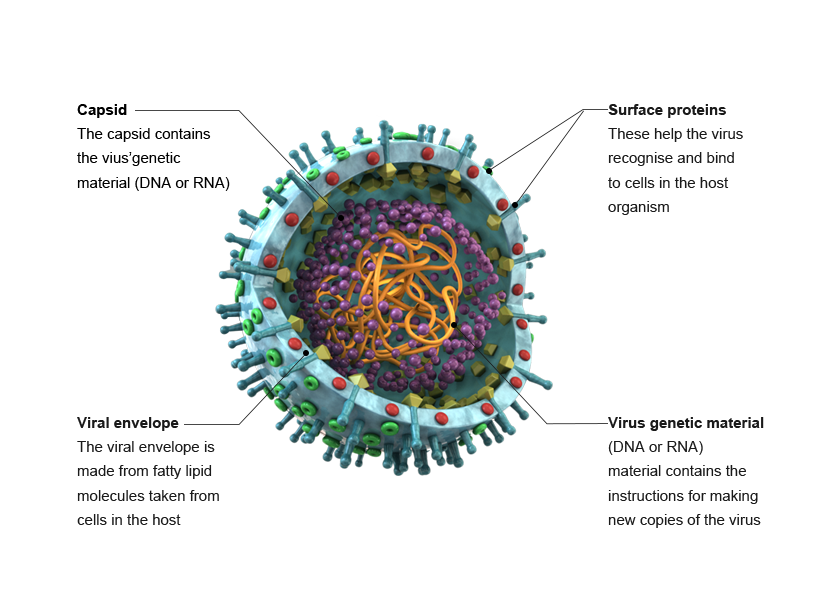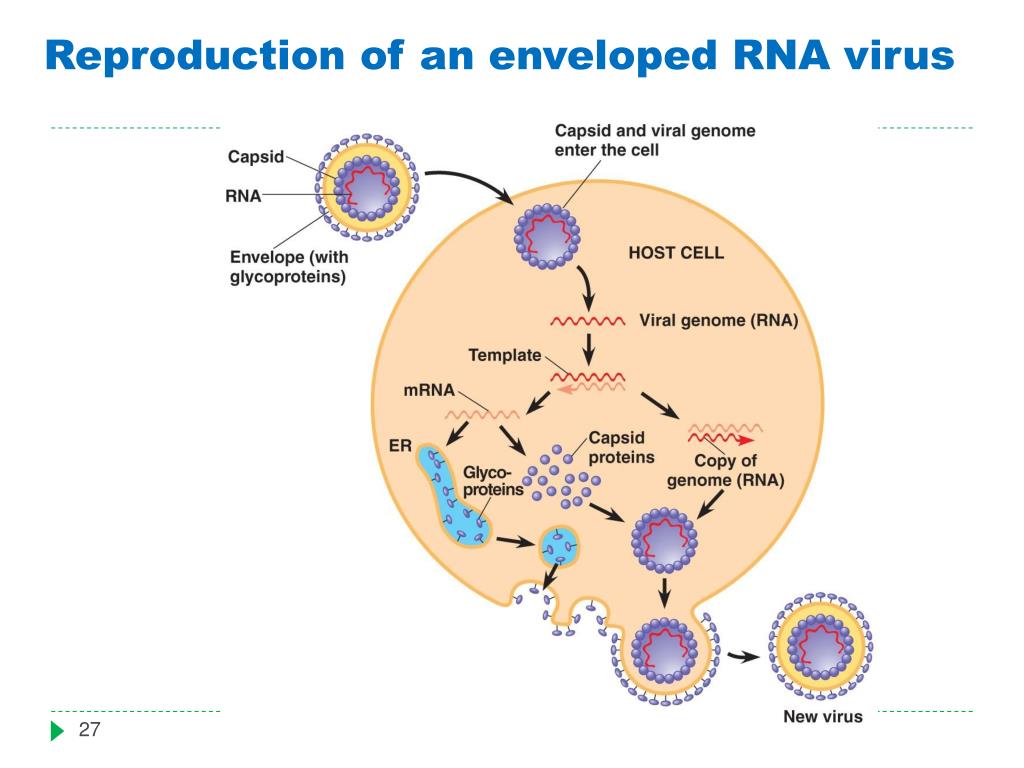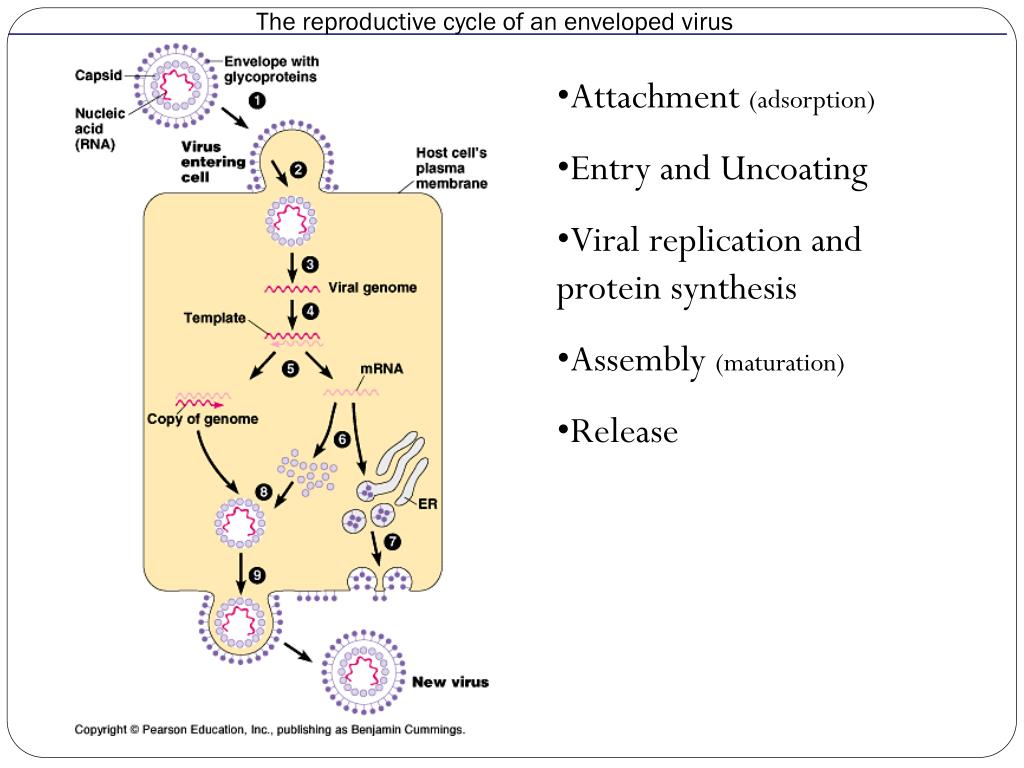The first virus described, tobacco mosaic virus, is a naked helical virus. However, most animal viruses do not possess obvious attachment structures.

PPT Bacteriophages have tails Animal viruses have an
Together this is called the nucleocapsid.

Enveloped animal virus. Hiv, hsv, hbv, and influenza virus are several examples of enveloped viruses. Helical viruses can be enveloped or naked. 1) a nucleic acid genome and 2) a protein capsid that covers the genome.
Subsequently, question is, do all viruses have envelopes? They have a protein shell, or capsid, and genetic material made of dna or rna that's tucked inside the caspid. (i) they first bind to specific surface receptors of the target cell membrane and then, (ii) they fuse the viral and cell membranes.
• involves uncoating of the virus (release of dna, rna) Herpes simplex, chickenpox virus, influenza virus etc. By contrast, in cases of enveloped viruses, envelopment, a process in which the capsids become surrounded by lipid bilayer, takes place prior to the release.
As we have already discussed using the example the influenza virus, enveloped animal viruses may bud from the cell membrane as they assemble themselves, taking a piece of the cell’s plasma membrane in the process. It is closely related to the viruses that cause measles in man and rinderpest in. The envelope contains phospholipids and proteins derived from host cell membranes.
Viruses are classified based on the presence or absence of this envelope around the protein coat. The basic life cycle stages of animal viruses differ from bacteriophages in some key ways: Classes of animal viruses, grouped by type of nucleic acid tobacco mosaic virion assembly tobacco mosaic virions comparison of naked and enveloped virus, two basic types of virus particles.
As a protein in the viral capsid binds to its receptor on the host cell, the after making their proteins and copying their genomes, animal viruses complete the assembly of new virions and exit the cell. Like other viruses, animal viruses are tiny packages of protein and nucleic acid. Penetration in addition, enveloped viruses often enter the cell by a process of fusion of the virion and cell membranes.
They may also feature an envelope, a sphere of membrane made of lipid. Enveloped viruses may enter their host cells by fusion of their envelope with the cytoplasmic membrane, thereby depositing their nucleocapsid within the cell. The family includes equine arteritis virus (eav), porcine reproductive and respiratory syndrome virus (prrsv), lactate dehydrogenaseelevating virus (ldv) of mice and simian hemorrhagic fever virus (shfv).
Enveloped virus has the membranous envelope surrounding the capsid. Enveloped viruses exhibit surface spikes that are involved in adsorption; Asked jul 23, 2019 in biology & microbiology by liger.
2 viral structures the replication cycle of a bacterial virus. The important enveloped animal thermal inactivation of animal virus pathogens abstract this article reviews available data and mechanisms regarding the thermal inactivation of a number of important pathogenic animal viruses in comparison with relevant surrogate viruses. Enveloped animal viruses may bud from the cell membrane as they form, taking a piece of the plasma membrane or internal membranes in the process.
These viruses belong to the virus group named ‘enveloped viruses’. With respect to the relatedness of the capsid assembly to the envelopment, two mechanisms exist. Enveloped animal viruses enter their host cells by a process of membrane fusion.
All viruses contain the following two components: Protocols and procedures (farm animal) , protocols and procedures (companion animal) Enveloped viruses acquire this envelope during viral replication and release.
Animal virus capsids come in many shapes. In fact, most plant viruses are helical, and it is very uncommon that a helical plant virus is enveloped. This fusion can occur at the cell plasma membrane or within the endocytic vacuolar system, depending on the characteristics of the virus fusion protein.
Examples of naked viruses are polyomavirus (ie, sv40) and adenovirus. After making their proteins and copying their genomes, animal viruses complete the assembly of new virions and exit the cell. The following are some examples of enveloped viruses:
Made of lipid and proteins rarely glycoprotein.

PPT CHAPTER 1 9 PowerPoint Presentation, free download

Viral Structure Ncert Line By Line

EXAM 3 CONT VIRUSES & more lab Flashcards Easy Notecards

Microbiology V ; VIRUSES The Amazing Medicine
[Solved] ) Draw an encapsulated animal virus with a

PPT Characterizing and Classifying Viruses, Viroids, and

Viral Clearance Studies for the Biopharmaceutical Industry
PPT Viruses, Viroids, and Prions PowerPoint Presentation

Structure of enveloped and nonenveloped viruses. Non

Animal and plant viruses, prions, and viroids
Chapter+5,+25,+37 (microbiology) 8th edition

Different entry pathways followed by animal viruses along

Viruses the Top Killers Elabscience



